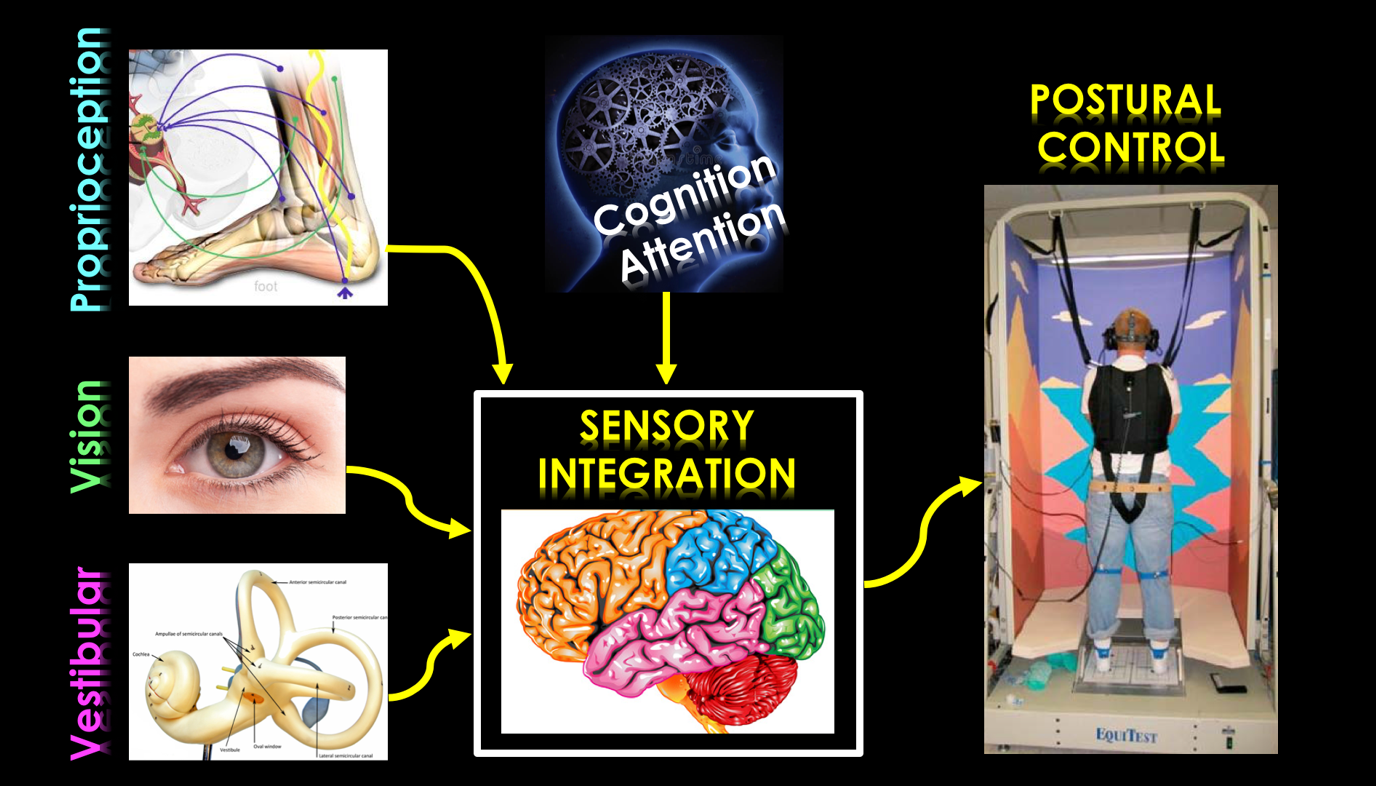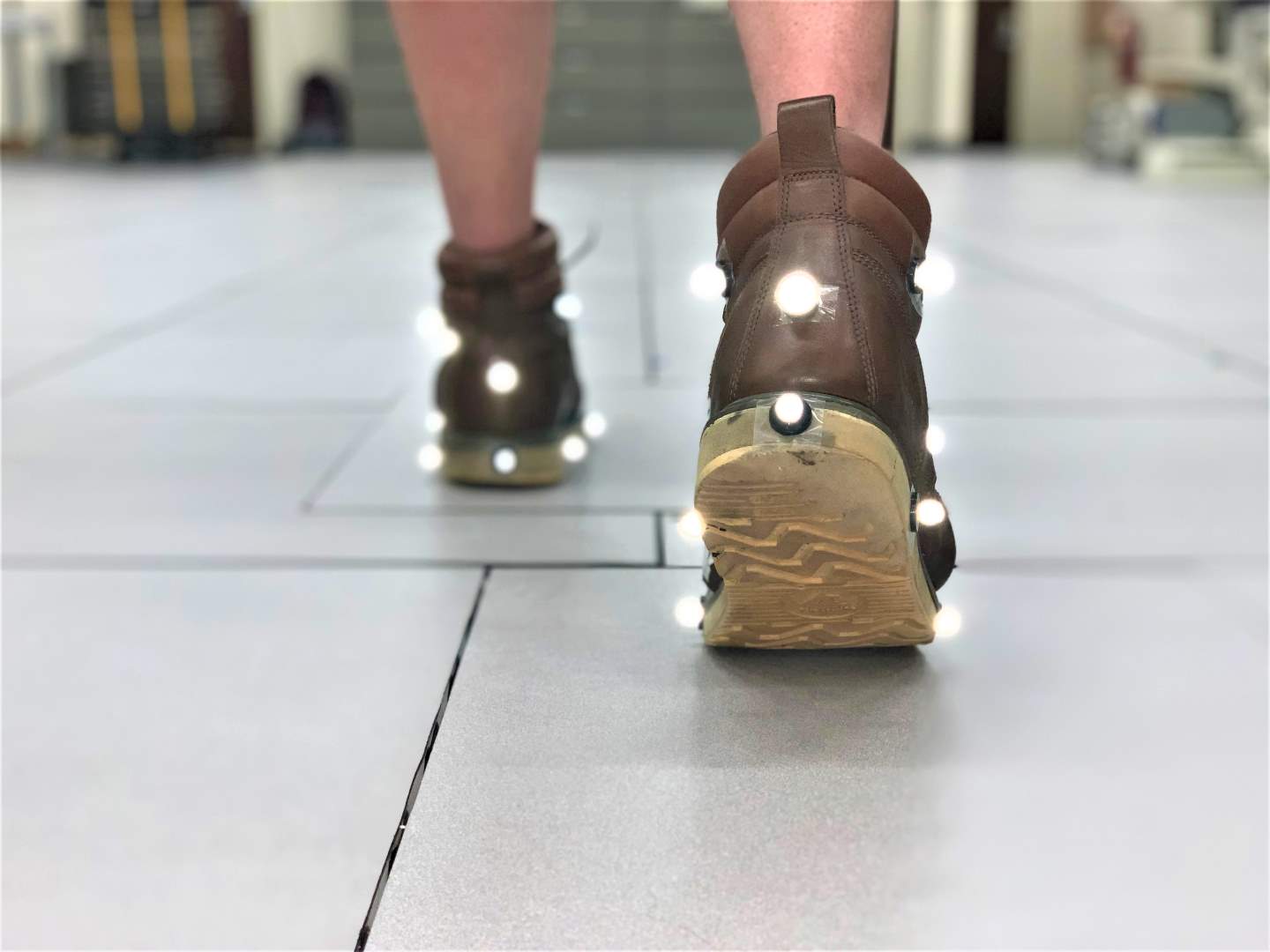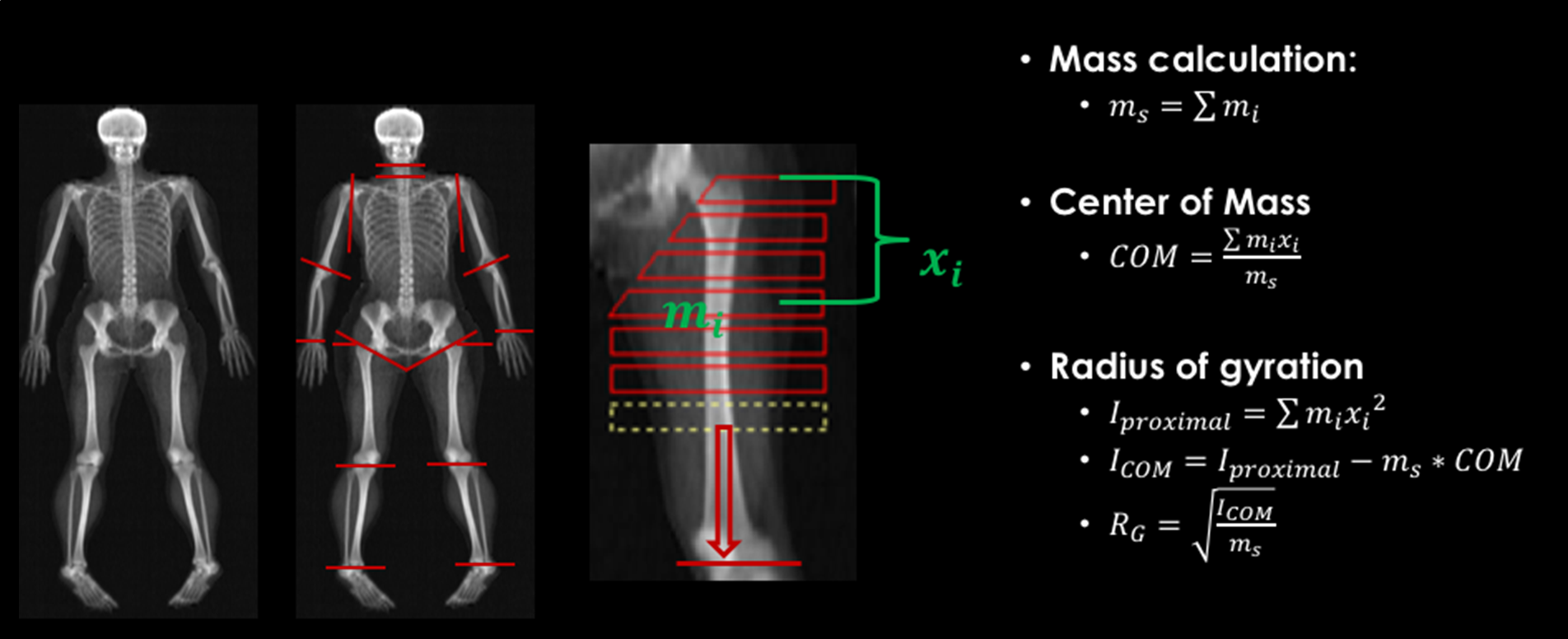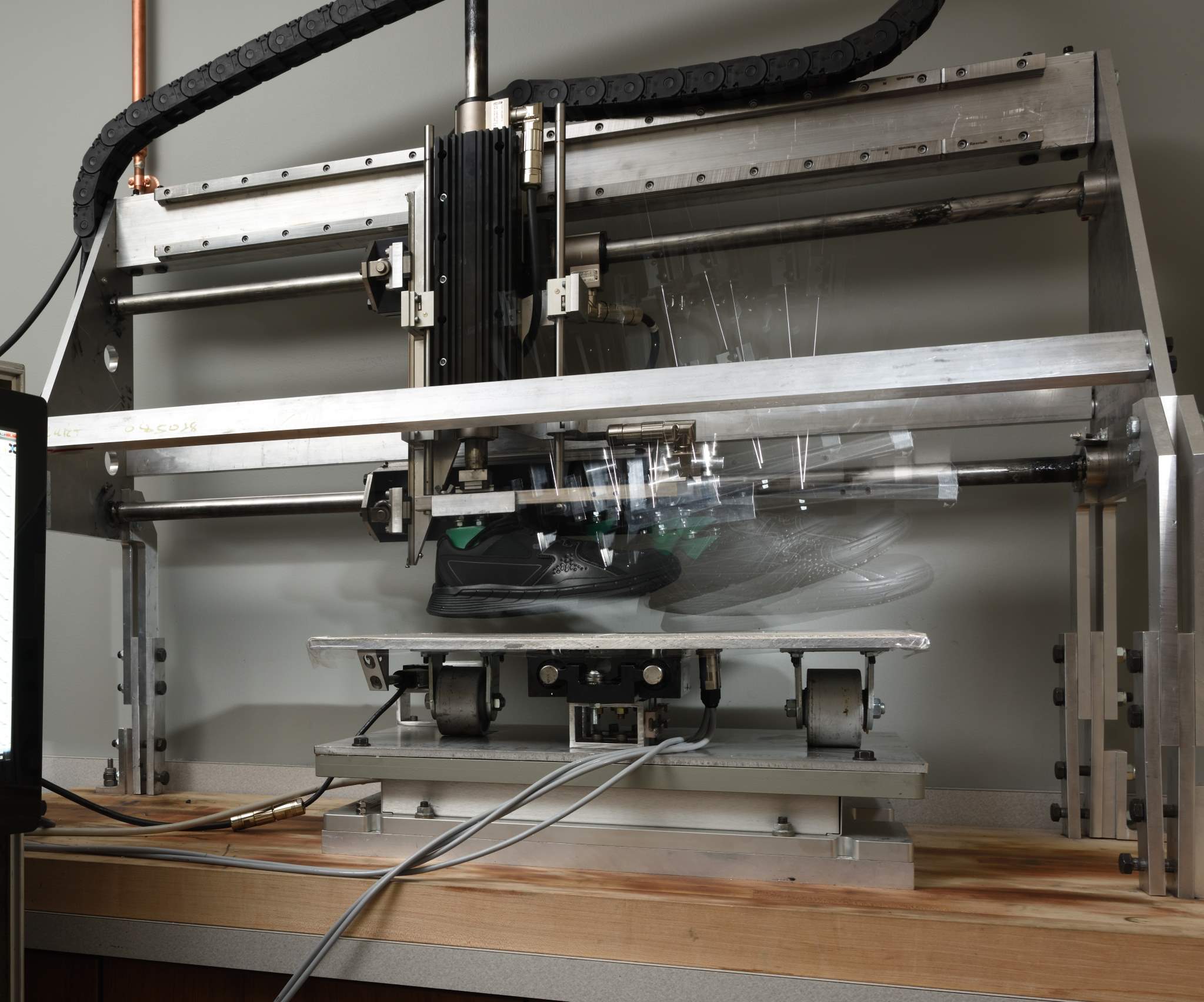Work-Related Projects (NIOSH Funding)
Sensorimotor Function in Clinical Populations
Aging-Related Balance and Mobility Studies
Musculoskeletal Health and Performance
Sensorimotor Function in Clinical Populations


Low Vision, Balance/Gait and Falls
PI: Dr. Rakié Cham
The number of adults living with low vision is expected to dramatically increase with the aging of the population. Adults with low vision conditions fall at an increased rate compared to healthy adults, resulting in injury and death, and impacting mental and behavioral health. Understanding why adults with low vision conditions fall more often than their healthy counterparts is critical to develop effective falls prevention and rehabilitation programs with appropriate intervention measures. Vision impairments, e.g. visual field defects, reduced contrast sensitivity, reduced depth perception, reduced visual acuity, etc. have all been associated with falls risk. However, another mechanism that may be contributing to falls is of central origin and relates to an impaired ability to appropriately integrate multisensory inputs relevant for postural control, leading to a balance loss and fall. The following projects in this area are being pursued at the Human Movement, Balance and Gait Laboratory.
Brain Structures and Functions and Visuomotor Performance in Glaucoma
PIs: Dr. Rakié Cham & Dr. Kevin Chan (NYU)
BrightFocus Foundation / G2016030
Glaucoma is an irreversible neurodegenerative disease of the visual system and is the second leading cause of blindness in the world. In addition to vision changes, increasing recent evidence suggests widespread structural and functional brain alterations brain in glaucoma. The impact of these alterations on sensorimotor function related to postural control is unclear. The goal of this project is twofold: (1) better understand how glaucoma may impair the brain structurally and functionally using multimodal magnetic resonance imaging (MRI) techniques, and (2) whether these brain changes in glaucoma are associated with impairments related to sensory integration processes related balance and mobility.
Development of Functional Assessment Tools (Balance/Gait and Dexterity) in Adults with Central Vision Loss
PI: Dr. Rakié Cham
University of Pittsburgh’s Chancellor Office / Pitt Seed Project Program
Exciting new medical interventions show great promise to improve or restore functional vision in patients with various ocular conditions. Yet, there are currently no standard assessment tools that evaluate the efficacy and quality of these emerging interventions on patients’ quality of life. This project addresses this need, specifically in the domains of balance/gait and dexterity, both top concern of individuals with central vision loss. More specifically, the long-term goal of this project is twofold: (1) to gather a detailed understanding of the function-related needs of patients with central vision loss; and (2) to develop a set of performance-based outcome measures that can be used to assess function levels in patients with central vision loss. The impact of lighting will also be assessed.
Falls and Fear of Falling in Patients with Glaucoma
PI: Dr. Rakié Cham
The goal of this study is to determine if there is a relationship between the extent of peripheral visual field defects in glaucoma, fear of falls and retrospective reports of fall events. Participants were contacted by mail and asked to complete two questionnaires about recent falls and fear of falling while performing certain activities.
The Interplay between Cognition, Balance/Gait and Falls in Glaucoma
PIs: Dr. Rakié Cham & Dr. Mark Redfern
Impaired cognition could be a significant contributor to reduced balance/gait control and subsequent falls in adults with low vision. This project is focused on gaining an understanding of the interaction between cognition, falls and postural control performance (standing and walking) in sensory challenging conditions in glaucoma.
Role of Attention in Balance and Mobility in Autism Spectrum Disorders
PIs: Dr. Rakié Cham & Dr. Jana Iverson
National Institute of Child Health and Human Development / NIH 1 R21 HD079254
Symptoms of Autism Spectrum Disorder (ASD) extend beyond the traditional diagnostic triad of social cognition deficits, communication impairments, and limited interests/repetitive behaviors. Converging evidence supports the presence of motor abnormalities in the domain of postural control, including balance and gait. The understanding of these impairments is limited. The long-term goal of our team is to identify mechanisms underlying motor and postural impairments in ASD to further the understanding of the bases of ASD. This project represents an initial step in a program of research designed to identify potential mechanisms underlying motor and postural impairments in ASD. More specifically, here we focus on links between postural/locomotor control and cognition (specifically the top-down regulation of access to the limited process of action control, or ‘attention for action’) in ASD. More specifically, we use our established dual task paradigms to investigate the impact of attention abilities on balance and gait function in sensory challenging conditions.
Musculoskeletal Health and Performance
Utilizing Wearable Near-Infrared Spectroscopy (NIRS) Sensors to Enhance the Understanding of Physical Activity and Lifestyle Behaviors on Muscle Health
PI: Dr. April Chambers
University of Pittsburgh Healthy Lifestyle Institute
Physical activity is often continuously monitored using at-home fitness trackers or activity monitors which only provide global measures of physical activity and not information on muscle health or performance. The goal of this research project is to determine the feasibility of using wireless wearable near-infrared spectroscopy (NIRS) sensors to enhance the understanding of varying levels of physical activity on vascular muscle health. The findings of this research may increase the knowledge of varying levels of physical activity on vascular muscle health.
Adaptive Postural Strategies - Impact of Aging
PIs: Brooke Coley (Mentee); Dr. Rakié Cham (Mentor)
National Institutes of Health / NIH-NIA 1 F31 AG025684
The goal of this study was to gain an understanding of how aging impacts the ability to maintain or recover balance after a slip or a trip. We also wanted to explore this relationship while performing both familiar and unfamiliar tasks, e.g. walking forward and walking backward. In this study, we repeatedly exposed subjects to slipping and tripping hazards.
Biomechanics of Slip and Falls
PI: Dr. Rakié Cham
National Institute for Occupational Safety and Health / NIOSH 1 R03 OH007533 & R01 OH007592
The long-term goal of this research was to reduce slip and fall accidents in young and older adults, in the general population and occupational settings. Causes of slips and falls are numerous and complex. In this line of research, we focused on gait biomechanics--- both gait style (or initial conditions at the onset of a slip) and postural recovery strategies after a slip was initiated. The impact of anticipating a slippery floor versus unexpected slips was also investigated. Findings were compared between young and older subjects, and between participants who were able to recover from a slip versus those who lost balance and fell. The results of this study provided a better understanding of the human factors that impact the risk of slips and falls. The use of this knowledge might improve fall prevention and training programs among older adults.
Comparative Effectiveness between Microprocessor Controlled Prosthetic Knees and Non-Microprocessor Controlled Prosthetic Knees
PI: Dr. April Chambers
The American Orthotic and Prosthetic Association
The goal of the proposed research was to compare falls risk between microprocessor controlled prosthetic knee joints and non-microprocessor controlled prosthetic knee joints in older adults with unilateral transfemoral amputations. Microprocessor controlled prosthetic knee joints have been shown to improve certain aspects of gait in young adults, such as side to side symmetry, loading patterns, energy consumption, and risk of falling. However, no studies have examined older adults with unilateral transfemoral amputations to determine if the benefits of microprocessor controlled prosthetic knee joints apply to this high fall risk group. This knowledge is needed for health-care organizations to pay for these devices. A fall risk biomechanical analysis was performed using whole-body motion capture and ground reaction forces to compare non-microprocessor controlled and microprocessor controlled prosthetic knee joints while walking on a level surface, stairs, ramps, uneven terrain and during stumbling. Clinical information and self-reported risk of falls and near falls were also considered.
Computer Model of Knee
PIs: Dr. Mark Redfern & Dr. Richard Debski
National Institute for Occupational Safety and Health
The goal of this work was to help reduce knee injuries during kneeling and squatting work. Knee injuries are believed to be a significant problem in mining. This is particularly true when the work is performed in a kneeling posture. The development of a knee model for evaluation of injury potential in kneeling postures is important to reducing injuries. The specific aim of this work was to validate a computerized biomechanical model of the knee that was developed to prevent knee injury and to determine the internal stresses in the knee from externally applied forces and moments similar to those found during the postures analyzed in kneeling and squatting work environments. The combined experimental and computational validation methodology enabled study of the stresses in the soft tissue at the knee in response to various loading conditions.
Determining the Biomechanical Characteristics of Falls
PI: Dr. Mark Redfern
Bosch, Inc.
Human balance is challenged during every day activities and for some people this task can be more difficult than others. This problem is particularly true as we age, resulting in increased falls in older adults. This aspect raises the question about the practicality of detecting a fall or even of predicting a fall before it happens to potentially avoid the consequences associated with falls. The specific aim of this small study was to gather sensor data during perturbations to locomotion. An internally induced sensory perturbation using galvanic vestibular stimulation was used to induce sensation of loss of balance, and the postural response was recorded using a set of miniaturized sensors placed on the body and motion capture. Such a study was very valuable for the community because it was a step forward toward a better understanding of characteristics of instability and lead towards a system that could reduce injuries and discomfort associated with falls, such as fear of falling.
Development of an Ergonomic Program at the University of Pittsburgh
PI: Dr. Rakié Cham
Environmental Health and Safety, University of Pittsburgh
The purpose of this project was to assess the incidence of work-related injuries in employees of the University of Pittsburgh. Also, potential solutions to reduce the high risk of such injuries were proposed.
Effect of Vibrotactile Feedback on Gait
PIs: Dr. Rakié Cham & Kathleen Sienko (University of Michigan)
Pittsburgh Claude D. Pepper Older Americans Independence Center
The goal of this study was to minimize the risk of falls triggered by slipping in young and older adults through the use of a wearable vibrotactile feedback device that detected onset of slip and provided cues to the wearer to generate a compensatory postural response that we have shown to maximize the chance of recovering balance after such external perturbation. Initially, we focused on using the vibrotactile feedback device to train adults how to walk 'safely' by minimizing slip risk. In particular, as a starting point, we focused on a fast and coordinated swing phase interruption of the trailing leg in an attempt to arrest the body’s downward descent. This was validated in young and older healthy subjects while walking on dry floors.
Effects of Personal and Ergonomic Factors on Balance of Progressive Lens Glasses Wearers
PI: Dr. Kurt Beschorner
Pittsburgh Claude D. Pepper Older Americans Independence Center
Progressive lens glasses (PLGs) dramatically increase an individual’s fall risk. Little is currently understood regarding falling risk factors for progressive lens wearers and ergonomic solutions that reduce falling risk. Given that the functioning of the vestibular and vision systems are integrally connected by the central nervous system and are critical to balance and ambulation, their function may provide insight into why some PLG wearers fall, while others do not fall. Furthermore, ergonomic interventions that enhance visibility and contrast may improve balance in PLG wearers since PLGs influence vision and contrast sensitivity and their functioning is important to balance. This study aimed to: 1) quantify the link between vestibular and vision function on balance during stepping tasks; and 2) identify the gait adaptations and environmental conditions that improve functional balance. We recruited subjects from: 1) novice PLG or bifocal wearers; 2) older PLG or bifocal wearers over the age of 70 years old. Subjects underwent a vestibular functioning screening, vision assessment, balance assessment and functional gait trials. The environmental conditions like lighting, contrast of steps and availability of railings were modified to determine the effects of the surrounding environment on functional balance while wearing PLGs or bifocals. Biomechanical data was collected to determine the effects of personal adaptations on functional balance while using PLGs or bifocals.
Ergonomic Study of Surgeon Positioning during Microsuspension Laryngoscopy
PI: Dr. Libby Smith
Surgeon positioning for the performance of microlaryngeal surgery is inherently challenging and ergonomically unfavorable. The maintenance of static, prolonged load-bearing postures involving neck flexion or extension and holding the upper limb in a bent position puts the surgeon at risk for musculoskeletal injury. This study examined the ergonomics of surgeon positioning for microlaryngeal surgery and quantified the physiological difference between an optimized and non-optimal posture for surgery.
Ergonomics of Flooring: The Influence of Flooring on Standing Comfort and Fatigue
PI: Dr. Mark Redfern
3M Company
The objective of this study was to investigate the influence of varying floor mat parameters on standing fatigue and comfort. Subjective questionnaires and physiological measures were used to evaluate these effects in the laboratory.
Flooring and Long Term Walking/Standing Fatigue
PI: Dr. April Chambers
This was a pilot study to explore the feasibility of using Near Infrared Spectroscopy (NIRS) as an objective physiological measure of long-term muscle fatigue due to standing. NIRS allowed us to quantify oxygenation and blood flow in lower extremity muscles over time. We used this technology to quantify the impact of flooring on long term standing muscle fatigue, to understand the underlying mechanisms of this problem in occupational settings and to relate oxygenation and blood flow measures to subjective measures of discomfort. The long term goal of this line of research was to quantify and understand the impact of flooring on the physiological, biomechanical and psychological constructs of long term lower extremity fatigue in occupational settings.
Interpersonal Touch for Information Transfer in Therapy
PI: Dr. Patrick Sparto & Saskia Steinl
DFG, Germany
Interpersonal touching transfer information between individuals through haptic sensorimotor mechanisms. When physical therapists interact with patients, they use these haptic cues to guide patients through different therapies. The overall objective of this project was to understand the information transfer between two people when there is a physical interaction during standing, with an application towards balance therapy.
Knee Kinematics during Gait Measured in Obese and Non-Obese Individuals using High-Speed Biplane Radiography
PI: Dr. April Chambers
Osteoarthritis Research Society International Scholarship
Obesity is a major risk factor for the onset of musculoskeletal injuries such as knee osteoarthritis and increased falls risk. With increasing prevalence of obesity worldwide, medical costs, morbidity, and disability associated with obesity-related injuries are likely to increase in the upcoming years. A drawback of many studies evaluating biomechanical gait patterns in obese subjects is the methodology. All included studies in the recent systematic review on gait biomechanics in obese subjects used surface markers for the measurement of skeletal movement which suffer from relatively large measurement errors due to movement of the skin relative to the underlying bone, especially with large subcutaneous fat mass, as in obese. The magnitude of the measurement errors when using surface markers makes evaluation of knee joint kinematics, especially in the frontal and transverse planes among obese, highly questionable. Recently, new measurement techniques have been developed to overcome these drawbacks. Knee kinematics of obese have never been compared to normal-weight controls using high sensitive methods, such as high-speed biplane radiography. The present study aimed to compare knee kinematics during unperturbed gait (normal walking) and knee kinematics/associated falls risk during perturbed (simulated slips/trips) gait between otherwise healthy obese and normal-weight subjects. The purpose of this study was to explore the knee biomechanical mechanisms during normal walking and a simulated slip/trip in obese and non-obese adults.
Lower Extremity Muscle Contributions to Rapid Voluntary Stepping in the Elderly
PI: Dr. Arash Mahboobin
Pittsburgh Claude D. Pepper Older Americans Independence Center
The primary objective of this study was to use musculoskeletal computational modeling techniques to investigate the influence of aging on lower extremity muscle contributions and coordination during anticipatory postural adjustments. Subjects performed a stepping task that included simple step reaction time trials where subjects were asked to step as quickly as possible to a location forward with one foot, in response to an auditory cue. Subjects had knowledge of the step location prior to each auditory cue. Our modeling approach was to conduct muscle-driven forward dynamics simulations based upon optimum tracking techniques common in musculoskeletal modeling using captured experimental data.
Medication Effects on Balance and Gait in the Normal Old
PI: Dr. Robert Nebes
National Institutes of Health / NIH R01 AG030452
Medications affecting the central nervous system (e.g., sedatives) are known to increase the risk of falls in the elderly. Another class of medications that may impair postural stability and gait consists of drugs that inhibit acetylcholine, a neurotransmitter widely distributed in the brain. Many of the medications most commonly prescribed to the elderly have an anticholinergic effect, and older individuals often take multiple anticholinergics including over-the-counter drugs. Another condition linked to gait/balance decrements is cerebrovascular disease, evident on MRI scans as hyperintense areas in the cerebral white matter - white matter hyperintensities (WMH). There is evidence that anticholinergic medications and cerebrovascular disease may have a synergistic effect such that older persons with a greater volume of WMH are more sensitive to anticholinergic medications thus, perhaps making them particularly vulnerable to any gait/balance deficits associated with these medications. To test this hypothesis, we recruited normal elderly individuals who were given tests of balance, gait, psychomotor speed and attention. We obtained a blood sample to determine each subjects' cumulative anticholinergic burden (serum anticholinergic activity), and a structural MRI to measure the volume of WMH present in the subject's total brain, as well as in those white matter tracts known to carry cholinergic fibers. This study examined whether the balance and gait performance of older individuals varied as a function of their serum anticholinergic activity and whether this effect of anticholinergic load was greater in older persons with co-existent cerebrovascular disease (i.e., greater volumes of WMH). We also examined whether the effects that anticholinergic medications and WMH have on postural control and gait were mediated, to some degree, through the decrements that WMH and anticholinergic drugs produce in cognitive functioning - specifically in psychomotor speed and in divided and selective attention.
Modeling Shoe-Floor Interface Properties to Predict Slips and Falls
PI: Dr. Mark Redfern
National Institutes of Health
Slip and falls continue to be one of the leading causes of work-related injuries. The reduction of these injuries is dependent upon improved identification of slippery conditions and the design of proper shoes and floors for various environments. The long-term goal of this research project was to reduce injuries due to slips and falls in the workplace through the development of a computational model that predicted the coefficient of friction of the shoe-floor-contaminant interface. The model was based upon: micro-level properties of the shoe-floor-contaminant interface (material and surface characteristics along with lubrication properties) and macro-level designs of the shoe (i.e., tread and shape) and floor. The micro-level model included measurements of properties of shoes, floors and contaminants that were combined in a computational model based upon fundamental tribological relationships. The macro-level model incorporated the micro-level model into a finite element representation of the shoe-floor interface. Micro-level model predictions were compared to the current tribological coefficient of friction testing and macro-level model predictions were compared to currently used shoe-floor interface slip resistance testing devices. The model predictions were also compared to actual human slips and falls during gait to determine the efficacy in predicting slips and/or falls.
Modeling of Trips
PIs: Dr. Rakié Cham & Jessica Hodgins (CMU)
Quality of Life Technology (QoLT) Engineering Research Center (ERC)
The major goal of this project was to simulate trips in young adults using physiologically relevant controllers in an attempt to understand the underlying mechanisms of failed recoveries from trips.
Postural Control in the Elderly: The Role of Attention
PI: Dr. Mark Redfern
National Institute on Aging, NIH
The objective of this recently completed NIH-funded research project was to increase our understanding of the influence of cognition on postural control in older adults. Specifically, we investigated the attentional capabilities, decision processing, and executive functioning in older adults and their influence on sensory integration for postural control.



